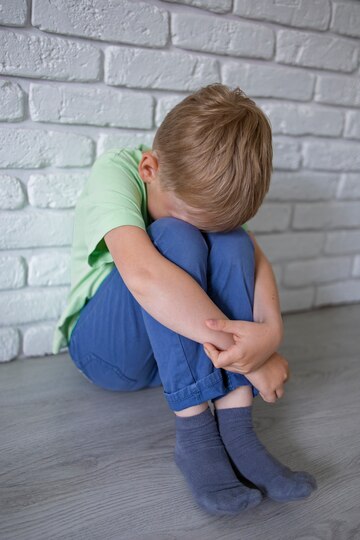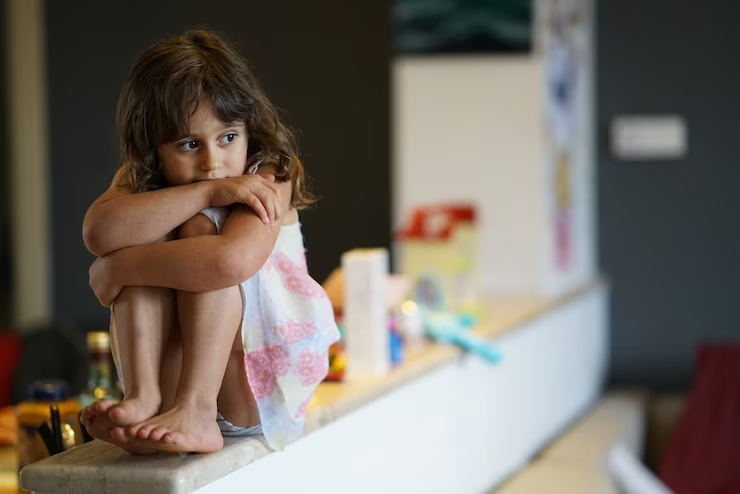Understanding Childhood Depression: Signs, Symptoms, and Strategies for Support
Explore childhood depression: recognize signs, symptoms, and support strategies to understand and assist children in coping effectively.
 Childhood depression is a serious issue that requires understanding and support. As caregivers, parents, or educators, it is essential to recognize the signs and symptoms, and know-how to effectively provide help. In this article, we will delve into the world of childhood depression, exploring its signs, symptoms, and strategies for support. Depression in children can manifest differently than in adults, often leading to a misdiagnosis or disregarding the signs altogether. Understanding the behavioral, emotional, and physical indicators is crucial to early detection and appropriate intervention. By being proactive and knowledgeable, we can create an environment that fosters emotional well-being and resilience in our children. From withdrawn behavior and persistent sadness to changes in sleep and appetite, we will explore the various signs of childhood depression. Additionally, we will discuss strategies for support, including open communication, therapy options, and creating a nurturing environment to promote positive mental health. By gaining a comprehensive understanding of childhood depression, you can equip yourself with the knowledge and tools to provide the necessary support and help your child navigate their emotions. Let’s embark on this journey together, ensuring the well-being of our children.
Childhood depression is a serious issue that requires understanding and support. As caregivers, parents, or educators, it is essential to recognize the signs and symptoms, and know-how to effectively provide help. In this article, we will delve into the world of childhood depression, exploring its signs, symptoms, and strategies for support. Depression in children can manifest differently than in adults, often leading to a misdiagnosis or disregarding the signs altogether. Understanding the behavioral, emotional, and physical indicators is crucial to early detection and appropriate intervention. By being proactive and knowledgeable, we can create an environment that fosters emotional well-being and resilience in our children. From withdrawn behavior and persistent sadness to changes in sleep and appetite, we will explore the various signs of childhood depression. Additionally, we will discuss strategies for support, including open communication, therapy options, and creating a nurturing environment to promote positive mental health. By gaining a comprehensive understanding of childhood depression, you can equip yourself with the knowledge and tools to provide the necessary support and help your child navigate their emotions. Let’s embark on this journey together, ensuring the well-being of our children.
What is childhood depression?
Childhood depression, also known as pediatric depression, is a mental health disorder characterized by persistent sadness, loss of interest or pleasure in activities once enjoyed, and other symptoms that interfere with daily life. It is essential to differentiate between normal mood swings and depression, as the latter significantly impacts a child’s functioning and well-being. Depression in children can occur at any age, but is more commonly diagnosed in adolescents. It is a real and treatable medical condition that requires attention and support from caregivers and healthcare professionals.
Signs and symptoms of childhood depression
Recognizing the signs and symptoms of childhood depression is crucial for early intervention and support. While some symptoms may overlap with those of adult depression, children may exhibit unique behaviors indicative of their distress. Common signs and symptoms include persistent sadness, irritability, withdrawal from friends and activities, changes in appetite or weight, sleep disturbances, fatigue or low energy, feelings of worthlessness or guilt, difficulty concentrating, and thoughts of death or suicide. It’s essential to observe these behaviors over an extended period and consider their impact on the child’s daily functioning and overall well-being.
The impact of childhood depression on children and their families
Childhood depression not only affects the child but also has significant implications for their family and social environment. Children with depression may struggle academically, socially, and emotionally, leading to difficulties in school, relationships, and overall quality of life. Family dynamics may be strained as caregivers try to understand and support their child while managing their concerns and emotions. Siblings may feel neglected or burdened, and parents may experience stress, guilt, and frustration. Untreated childhood depression can also increase the risk of substance abuse, self-harm, and suicide, underscoring the importance of early intervention and support for both the child and their family.
 Understanding the causes of childhood depression
Understanding the causes of childhood depression
The causes of childhood depression are multifaceted and involve a combination of genetic, biological, environmental, and psychological factors. Children with a family history of depression or other mental health disorders may be at higher risk, suggesting a genetic predisposition. Imbalances in neurotransmitters, such as serotonin and dopamine, can also contribute to depressive symptoms. Environmental stressors, such as trauma, abuse, neglect, or significant life changes, can trigger or exacerbate depression in susceptible children. Additionally, factors like chronic illness, academic pressures, bullying, and social isolation can contribute to feelings of hopelessness and despair.
Diagnosing childhood depression
Diagnosing childhood depression requires a comprehensive evaluation by a qualified mental health professional, such as a psychologist, psychiatrist, or pediatrician. The diagnostic process typically involves a thorough assessment of the child’s symptoms, medical history, family history, and psychosocial functioning. Standardized tools, such as questionnaires and rating scales, may be used to gather information from the child, parents, teachers, and other relevant sources. It’s essential to rule out other medical conditions and mental health disorders that may present with similar symptoms. A careful and accurate diagnosis lays the foundation for appropriate treatment and support tailored to the child’s needs.
Strategies for supporting a child with depression
Supporting a child with depression requires a collaborative and holistic approach that addresses their physical, emotional, and social needs. Open communication and active listening are essential for understanding the child’s experiences, feelings, and concerns. Validating their emotions and offering reassurance can help them feel understood and supported. Creating a structured and predictable routine can provide stability and a sense of control amidst feelings of chaos and uncertainty. Encouraging healthy coping mechanisms, such as exercise, relaxation techniques, and creative expression, can help alleviate symptoms and improve overall well-being. Additionally, involving the child in decision-making and problem-solving empowers them and fosters a sense of agency and self-efficacy.
 The role of therapy in treating childhood depression
The role of therapy in treating childhood depression
Therapy, particularly cognitive-behavioral therapy (CBT), is a cornerstone of treatment for childhood depression. CBT helps children identify and challenge negative thought patterns and develop more adaptive coping skills and problem-solving strategies. Through structured sessions with a trained therapist, children learn to recognize the connection between their thoughts, feelings, and behaviors and develop practical tools for managing distress and improving mood. Other therapeutic approaches, such as play therapy, art therapy, and family therapy, may also be beneficial depending on the child’s age, preferences, and family dynamics. Therapy provides a safe and supportive space for children to explore their emotions, build resilience, and work towards recovery.
Medication options for childhood depression
In some cases, medication may be recommended as part of a comprehensive treatment plan for childhood depression, particularly when symptoms are severe or resistant to other interventions. Selective serotonin reuptake inhibitors (SSRIs), such as fluoxetine (Prozac) and sertraline (Zoloft), are commonly prescribed antidepressants for children and adolescents. These medications work by increasing the levels of serotonin in the brain, thereby improving mood and reducing symptoms of depression. It’s essential to monitor children closely for side effects and changes in mood or behavior when starting or adjusting medication. Medication should always be prescribed and monitored by a qualified healthcare provider experienced in treating pediatric depression.
The importance of a holistic approach to treating childhood depression
Treating childhood depression requires a holistic approach that addresses the child’s physical, emotional, social, and environmental needs. A comprehensive treatment plan may include a combination of therapy, medication, lifestyle modifications, and support from caregivers, educators, and healthcare professionals. Creating a supportive and nurturing environment at home and school can enhance the effectiveness of treatment and promote long-term recovery. It’s essential to collaborate with all stakeholders involved in the child’s care, including family members, teachers, counselors, and healthcare providers, to coordinate efforts and ensure continuity of care. By addressing the underlying factors contributing to depression and fostering resilience and coping skills, we can empower children to overcome adversity and thrive.
Conclusion: Promoting mental health and well-being in children
Childhood depression is a significant public health concern that requires awareness, understanding, and proactive intervention. By recognizing the signs and symptoms of depression, understanding its impact on children and families, and implementing strategies for support and treatment, we can promote mental health and well-being in our children. Early detection and intervention are critical for preventing long-term consequences and improving outcomes for children with depression. By fostering open communication, providing a nurturing and supportive environment, and accessing appropriate resources and services, we can help children navigate their emotions, build resilience, and lead fulfilling lives. Together, let’s prioritize the mental health and well-being of our children and ensure they have the support and resources they need to thrive.
Learn more about Understanding Childhood Depression on our YouTube channel.
#understandingchildhooddepression #depressioninchildren #signsandsymptomsofchildhooddepression




